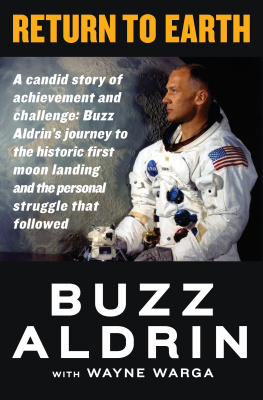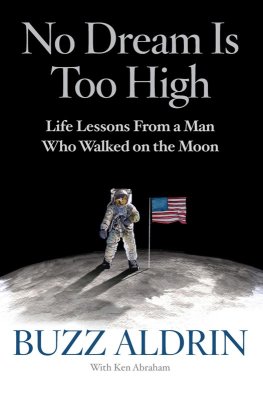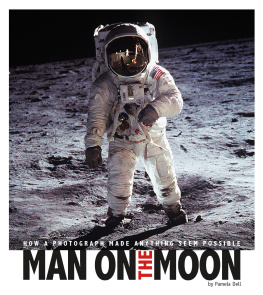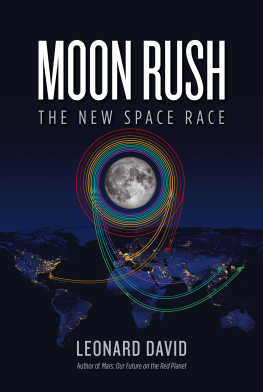Buzz Aldrin - Return to Earth
Here you can read online Buzz Aldrin - Return to Earth full text of the book (entire story) in english for free. Download pdf and epub, get meaning, cover and reviews about this ebook. year: 1973, publisher: Open Road Media, genre: Non-fiction. Description of the work, (preface) as well as reviews are available. Best literature library LitArk.com created for fans of good reading and offers a wide selection of genres:
Romance novel
Science fiction
Adventure
Detective
Science
History
Home and family
Prose
Art
Politics
Computer
Non-fiction
Religion
Business
Children
Humor
Choose a favorite category and find really read worthwhile books. Enjoy immersion in the world of imagination, feel the emotions of the characters or learn something new for yourself, make an fascinating discovery.
- Book:Return to Earth
- Author:
- Publisher:Open Road Media
- Genre:
- Year:1973
- Rating:3 / 5
- Favourites:Add to favourites
- Your mark:
- 60
- 1
- 2
- 3
- 4
- 5
Return to Earth: summary, description and annotation
We offer to read an annotation, description, summary or preface (depends on what the author of the book "Return to Earth" wrote himself). If you haven't found the necessary information about the book — write in the comments, we will try to find it.
Return to Earth — read online for free the complete book (whole text) full work
Below is the text of the book, divided by pages. System saving the place of the last page read, allows you to conveniently read the book "Return to Earth" online for free, without having to search again every time where you left off. Put a bookmark, and you can go to the page where you finished reading at any time.
Font size:
Interval:
Bookmark:

Return to Earth
Buzz Aldrin and Wayne Warga

To Charlie, Sam and Joan
Whose place I took
Who took my place
While she stood by me
always
There was a jolt as the small drogue chutes opened, rather like a rough landing on a bumpy runway. I took a quick look out the window, then settled back to wait. Minutes later, three bright orange-and-white-striped main chutes opened, jerking us like puppets against our couches, and we slowed down considerably. We were, it seemed, in a state of suspended slow motion.
We floated down through a bank of stratocumulus clouds as big and lush as the ocean they covered. The change was impressive. I had become so accustomed to seeing the starkness of space, where there is no haze and where delineations are quite sharp, that the sensation of looking out on a hazy early morning on earth was a welcome change. I could see the ocean below, and as I looked at it, I sniffed to smell it. Not yet.
The sensation caused by the change of scenery pales beside the sensation of getting used to the fact of weight. For a number of minutes, movement is an effort. Arms, which had floated before, now hung heavily and had to be willed to movement. Legs, which are about as necessary to space travel as an appendix is to a body, stirred to activity by threatening not to function at all.
We landed with all the grace of an old freight elevator. Air Boss had announced to us that the wave height was between three and four feet, but it looked more like thirteen or fourteen. And it felt like it too. Our chutes, tilting in the wind, brought us in at one angle, and the moon, governor of the tides, sent a wave our way from an opposing angle. With an enormous thwack, as jarring as it was noisy, we landed. Before the impact, my hand rested on circuit breakers which, when pushed in, would enable Mike to jettison our chutes. After impact, my hand was jammed painfully down beside me. All of us grunted in distress; I grabbed the circuit breakers and Mike jettisoned the chutes.
The Apollo spacecraft is a marvel of engineering. It is totally life-supporting, a miniplanet containing all facilities necessary for maintaining life. It also floats, whether right side up or upside down. There is no way to determine which way youll end up after landing, especially in a good wind and a delayed chute jettison.
It brings a smile now, but at the time, it wasnt quite so amusing. There we were, officially taking our position in the history books of mankind, floating upside down in the Pacific Ocean. It was July 24, 1969. The water was dark green and unfriendly, but its mist seeping in smelled good.
We bobbed around for seven minutes, the amount of time it takes the floatbag motors to pump air into the float-bagsthree little balloonswhich would turn us upright.
Air Boss, Apollo 11. Everyone okay inside. Our checklist is complete. Awaiting swimmers, Neil radioed.
Air Boss came right on and told us three swimmers were already in the water, and our flotation collar would be attached in less than two minutes.
It was over. No exclamations, no slaps on the back. No handshakes. All that would come later, at least the handshakes. We sat in silence, three men alone together with their private thoughts. The reverie seemed to last much longer than it actually did. I spent most of it convincing myself not to be seasick, and so, it turned out later, did Mike and Neil. It was one thing to land upside down (we got ourselves upright before the world watched us on television), it would be quite another to scramble out of the spacecraft tossing our cookies all over the place.
The flotation collar was fit into place, the hatch flew open and three gray-green biological isolation garments were thrown in. They came from one of the water rescue team men: a navy frogman, also wearing an isolation garment topped by a face mask with a filter on the side of it. He looked weird, right out of Jules Verne. But he still looked like a human being.
The isolation suits were like rubberized flying suits except that the zipper ran diagonally from lower left to upper right. A hood was attached, with a visor and a filter for breathing. You could talk, but the sound was muffled, and you could hear, but the information was garbled. As soon as we had our suits on, we put on Mae West life preservers and crawled out of the spacecraft into the rubber raft bobbing alongside the flotation collar. The suits were supposedly tested and airtight, yet minutes later moisture was seeping in and it was sticky and uncomfortable.
One of the frogmen helped us to stumble into the raft and another was right there with us from then on. Waves started rolling and splashing us, causing the hatch to slam into the head of one of the frogmen. He weaved for a moment as we all moved to catch him, but he recovered quickly and motioned us back down. Another handed us scrubbing cloths and detergent with which we had to thoroughly douse ourselves twiceonce with one cleansing substance, the second with another, all to counteract any contamination we might have brought from the moon. One by one we finished and were motioned to the other end of the raft, where we sat down and waited. The cloths we had used to scrub ourselves were tied to weights and dropped into the ocean. It was all conducted as a solemn ritual, as if it had been done through the ages. There were virtually no words spoken, partly because it was difficult to speak and understand through the suits but mostly because four helicopters hovered noisily above us.
I had begun to feel queasy inside the spacecraft, and bobbing around in the raft caused more rumblings in my stomach. I breathed deep; the cool air felt good, even though filtered. I looked about the raft for anything I could, if necessary, improvise into a motion-sickness bag. I had forgotten about the special plastic bag in my pocket. Activity is a great cure for incipient seasicknessI was still looking when I realized I now felt fine. We sat there for what seemed to be an eternity. It was only fifteen minutes, but being idle was distinctly foreign, and I kept glancing up, waiting for the helicopter to start down to pick us up. We communicated by a kind of improvised sign language, and I, for one, wondered how many people were watching us. The aircraft carrier USS Hornet was now in view, less than a quarter of a mile away, and I developed a sudden craving for a razor, shaving cream, and hot water. I wanted to feel presentable even though nobody could tell whether I was or not because of the isolation garment. The president of the United States and a lot of television cameras were waiting on the Hornet.
A Billy Pugh basket appeared from one of the helicopters and began dropping down in our direction. The Billy Pugh basket, named for its inventor, is a practical plastic and metal scooplike object which can literally scoop people right out of the water. I was second up in it, and during the ride, which lasted about two minutes, I had a peculiar feeling of loss. It wasnt until I glanced down that I could understand the feeling. Down in the water was Columbia, our spacecraft: small, compact, and a virtual extension of each of us. Now we were leaving. It had done its work and we had no more use for it. We had shed it, discarded our cocoon. It seemed small and helpless, yet minutes before it had represented safety and security.
I scrambled into the helicopter and the first person I saw was Bill Carpentier, a short, wiry, and humorous doctor from Canada who was a paramedic. If one of us had been injured, he would have jumped directly from the helicopter into the water to treat us. Instead, he was standing in the door smiling, his hand extended in greeting, the first recognizable face from what I would hereafter refer to as before. We shook hands and he helped me out of the bulky Mae West.
Font size:
Interval:
Bookmark:
Similar books «Return to Earth»
Look at similar books to Return to Earth. We have selected literature similar in name and meaning in the hope of providing readers with more options to find new, interesting, not yet read works.
Discussion, reviews of the book Return to Earth and just readers' own opinions. Leave your comments, write what you think about the work, its meaning or the main characters. Specify what exactly you liked and what you didn't like, and why you think so.






